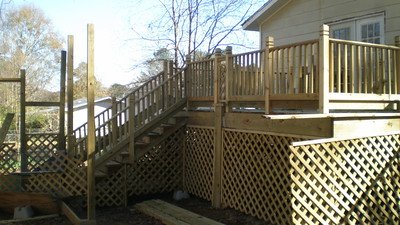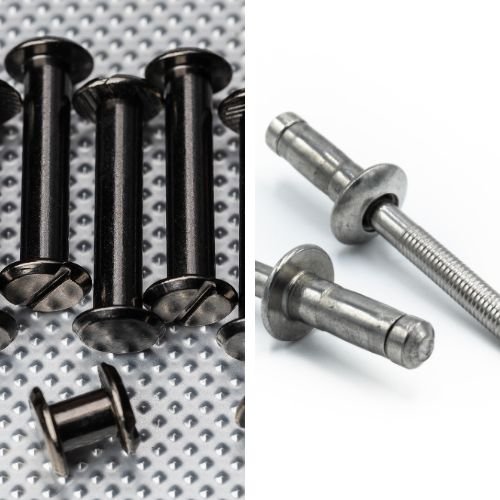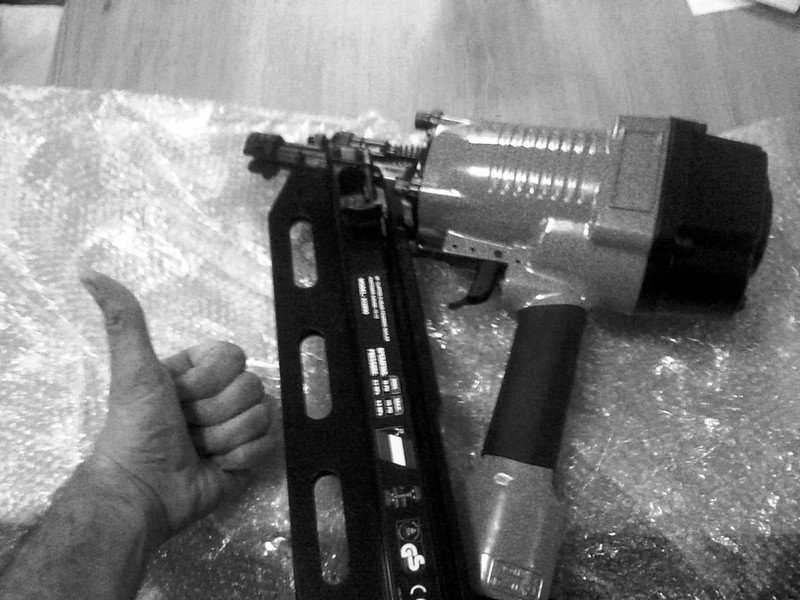Your deck is more than just an outdoor extension of your home. It’s a sanctuary, a gathering place, and a showcase for your style. Yet, many people overlook one key element that ties everything together: deck skirting.
Skirting is the frame to your outdoor masterpiece; the finishing touch that makes your deck functional and fabulous. But here’s the challenge: It can be overwhelming to choose the best material for your deck skirting. With so many options, how do you know what’s right for your home?
So let’s dive deep into the best materials for deck skirting and what makes them good and bad, and what emotions they bring when done right. Whether you’re looking for modern minimalism, rustic charm, or something completely different, this guide will help you make an informed (and inspired) choice.

1. Lattice: The Classic Choice with Timeless Appeal
Lattice is often the go-to material for deck skirting—and for good reason. It perfectly strikes a balance between form and function, allowing ventilation while hiding the underside of your deck. Lattice is available in wood or vinyl and is a lightweight, cost effective option for those who love a classic look.
Why People Love It:
There’s something nostalgic about lattice. It brings a memory of summer homes and a warm garden. Its criss cross pattern gives an airy feel to your deck, making it feel inviting and approachable. For families, it’s a simple way to keep critters out while maintaining visual appeal.
Pros:
- Easy to install and affordable.
- It helps with ventilation, reducing moisture buildup.
- Customizable with paint or stains to match your deck.
Cons:
- Lattice made of wood may warp or rot over time due to humidity.
- Limited durability when compared with other materials.
- Although low maintenance, vinyl lattice can look less authentic and may crack under the most extreme conditions.
Best For: For homeowners who want a traditional, budget friendly solution with a touch of elegance. In fact, lattice is your perfect companion, if you’re hosting summer barbecues or if you are someone who loves a classic garden aesthetic.
2. Composite Decking Skirting: Modern and Low-Maintenance
Composite materials have been a huge hit in the decking world, and they’re just as good for deck skirting. Made from a mix of wood fibers and plastic, composite skirting offers a sleek, polished look while standing up to the elements. It’s designed to look good and last long, making it a favorite for busy homeowners.
Why It Stands Out:
Composite skirting is your best friend if you value convenience. It’s durable, rot resistant, and available in a variety of colors and textures that mimic natural wood. Plus, it seamlessly pairs with composite decking for a seamless appearance.
Pros:
- Resistant to rot, insects, and fading.
- It’s Maintenance free, saving you time and effort.
- Offers Eco friendly options, using the recycled materials.
Cons:
- More upfront cost than wood or lattice.
- Lacking in ventilation, unless intentionally designed with gaps.
Best For: For modern homes or those looking for a high end, hassle free solution. If you’re someone who likes style with little maintenance, composite is worth the investment.
3. Wood Planks: Rustic charm with a Customizable Touch
Wood is no doubt a natural beauty. When paired with a wooden deck, wood plank skirting creates a cohesive look that’s hard to replicate. It’s a material that appeals to nature lovers and traditionalists alike.
Why It Resonates:
Wood skirting will connect you to nature thus adding warmth and character to your outdoor space. Every plank tells a story, and they can be stained or painted with any color you want, so you can make it your own. Wood has a charm that synthetic materials don’t have — it has texture, it has grain, it has imperfections that are all part of what makes it beautiful.
Pros:
- Aesthetic versatility: paint, stain, or leave natural.
- It has a timeless appeal with a natural finish.
- Individual planks can be easily replaced if damaged, making repairing relatively simple.
Cons:
- If not properly treated it is prone to rot, insects, and warping.
- Needs to be constantly maintained (sealed, stained, or painted) so it lasts.
Best For: Nature lovers or just someone looking for a handcrafted, personalized look. Wood is a great material for DIY projects, if you’re someone who likes to customize things.
4. Stone Veneer: The Epitome of Elegance
If you’re looking to make a big impression, stone veneer is the game changer. This material looks like a real stone, but at a fraction of the weight and cost, making it accessible without sacrificing luxury.
The Wow Factor:
Stone veneer exudes sophistication and permanence. This makes for a perfect way to give your outdoor space the overall aesthetic boost, making your deck feel like part of an upscale retreat. Just picture what it’s like hosting an evening gathering with your deck framed by stunning stonework— you’re living the dream.
Pros:
- They are extremely durable and resistant to the harshest conditions.
- It adds a lot of curb appeal and value to your home.
- Many different colors and textures that suit any style.
Cons:
- Higher installation costs and more complexity than simpler materials.
- Doesn’t allow for ventilation, and can be a problem in humid areas
Best For: For luxury homes or anyone who wants a high end, dramatic look. Stone veneer will not disappoint you, if you’re looking for a “wow” factor that impresses guests.
5. Metal Panels: Sleek and Industrial
Another alternative is metal deck skirting, which is mostly made of aluminium or steel, giving a cool, edgy vibe. It’s a bold choice, but one that works superbly with contemporary architecture while offering unparalleled durability.
What Makes It Unique:
Metal skirting is all about clean lines and practicality. It can withstand harsh weather conditions and requires minimal maintenance, making it an ideal option for homeowners who prioritize functionality and style. Imagine a sleek, modern deck framed with metal panels—it’s a statement piece for any home.
Pros:
- Long lasting and extremely durable.
- Low maintenance.
- Fire, pest and rot resistant, and thus guarantees long term reliability.
- Available in different finishes (brushed, powder coated) to match your aesthetic.
Cons:
- They are prone to dents or scratches, when subjected to heavy impacts.
- Sometimes they can feel cold or industrial, and may lack the warmth of natural materials.
Best For: Homes that are modern, or industrial in style, where durability is preference. Also, if you’re a fan of clean, minimalist designs, metal skirting is the way to go.
6. Brick: The Sturdy and Timeless Option
Brick skirting adds a traditional, solid look to your deck. It is so durable and its classic appeal means it never goes out of style. It’s a material that showcases stability and permanence, perfect for homeowners who want something that lasts.
Why It’s a Solid Choice:
With brick skirting you feel like it’s always been there, like it is part of your home forever. Those who value tradition and resilience will definitely choose it. Plus, its insulating properties can help regulate temperatures under your deck.
Pros:
- Incredibly durable and low maintenance.
- Adds a sense of permanence and value to your property.
- It has excellent insulation properties, keeping the area under your deck more stable in temperature.
Cons:
- It is expensive to install and needs professional help.
- Unless designed with intentional vents it usually has limited ventilation.
Best For: For traditional homes or any one looking for a classic look. For traditional homes or any one looking for a timeless look.
7. Faux Panels: Budget-Friendly with Endless Creativity
Faux panels replicate the look of wood, stone, or brick without the cost or weight. They are lightweight and easy to install, made from polyurethane or similar materials, and are a popular choice for budget conscious homeowners.
The Creative Edge:
Faux panels let you experiment with textures and styles without committing to the maintenance or expense of natural materials. If you’re a DIY enthusiast who wants a quick upgrade or someone who likes to change things up, these are a perfect choice.
Pros:
- Often lightweight and easy to install, without professional help.
- Affordable, that offers the look of luxury at a fraction of the price.
- Moisture and pest resistant.
Cons:
- Depending on the quality, it may look less authentic up close.
- Not as durable as real materials specifically under heavy impacts.
Best For: For DIYers or anyone on a budget, but still wants a stylish look. Faux panels are a great option if you’re looking for versatility without breaking the bank.
How to Choose the Right Material for Your Deck Skirting?
Ultimately at the end of the day, the kind of material for your deck skirting depends on your personal style and budget, plus the climate you live in. If you value tradition and craftmanship, wood or brick might be your best choice. If you want modern convenience, composite or metal could be the perfect fit. If you’re dreaming big but working within a budget, faux panels or lattice will do the trick beautifully.
Deck skirting isn’t just about looks. It’s about functionality, longevity, and making a space feel like home. Take your time and weigh your options, and choose a material that appeals to you. Your deck deserves nothing less.



